Okay, class. Time for another field trip
You! In the back! Put down your iPhone and pay attention.
Okay, class, today I have a real treat for you. However, before we get off the train and strike out for our destination, I have a pop quiz. Two questions. Very simple.
Before you click on that link, you need to answer these.
1. Name the medieval castle that withstood a siege as late as 1945, and, in fact, didn't surrender until well after the end of the war in Europe.
2. Name a castle where you can go on Walpurgis Nacht and watch (or participate in) der Hexenrennen.
Okay, time's up. The answer to both questions is simple.
First, the answer to the quiz questions is the same: Spandau Zitadelle
The Zitadelle dates way back, and the original fortification on the site is believed to have been built in 1557, but it was built upon an existing fort. It is a classic structure of the time, completely surrounded by a moat (and river) and created with no blind spots. Between then and now it has undergone many changes and additions.
Now, let's walk a short distance from the S-Bahn and take a look, shall we?
Our first view provides some idea of how an ideal medieval fortification might look to an attacking enemy. While the picture looks pretty, the task of assault is pretty daunting.
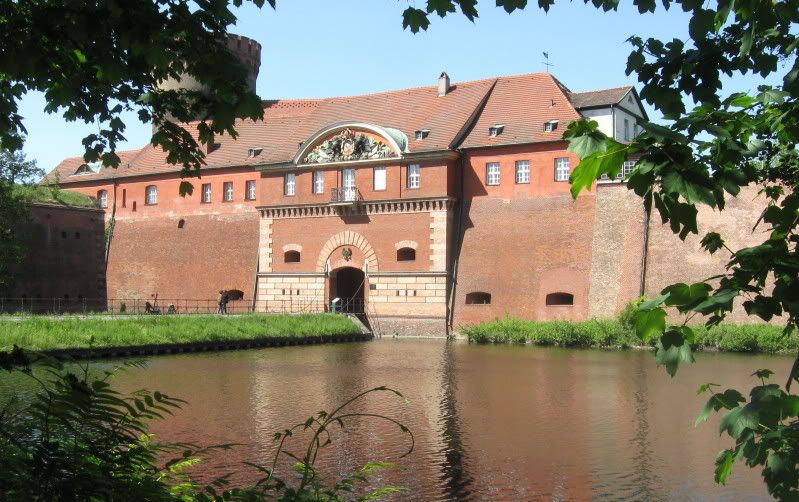
As we move a little closer, we can look down the causeway towards the main gate. This is the only access to the structure, and there is a short drawbridge in front of the doorway.
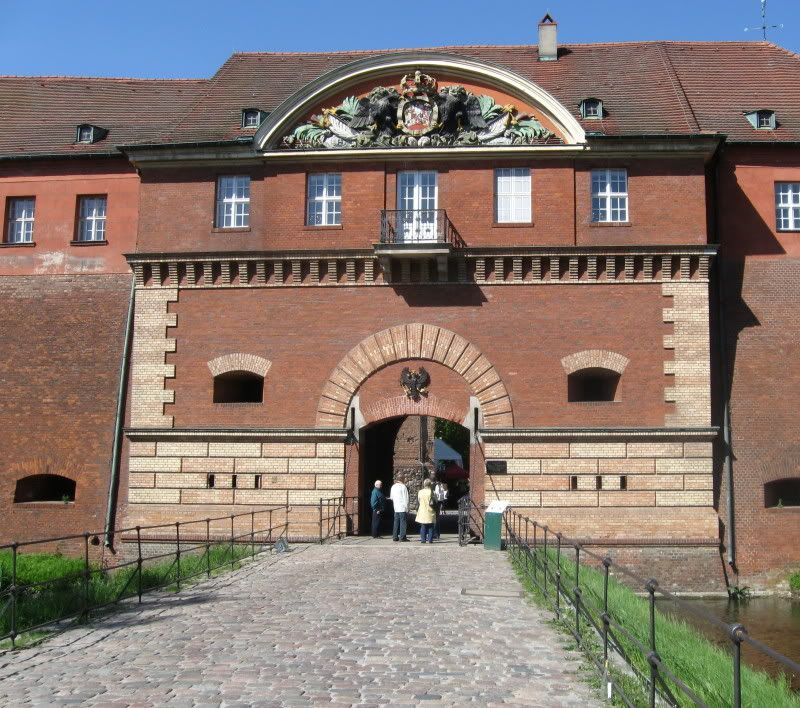
Before we go in, let's look around the outside a little, just to see what an attacking army was up against. Here's the south side of the fort, looking eastward.
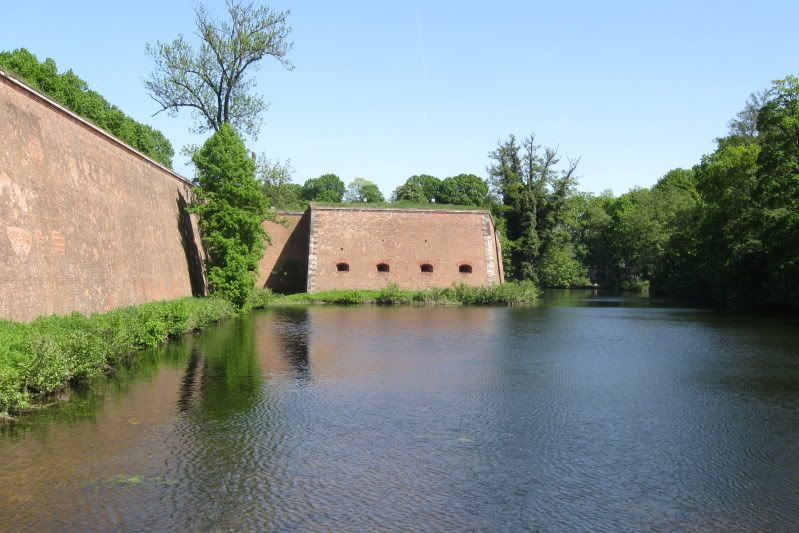
Here's the same wall, viewed more straight on. The gunports for cannon are more visible now.
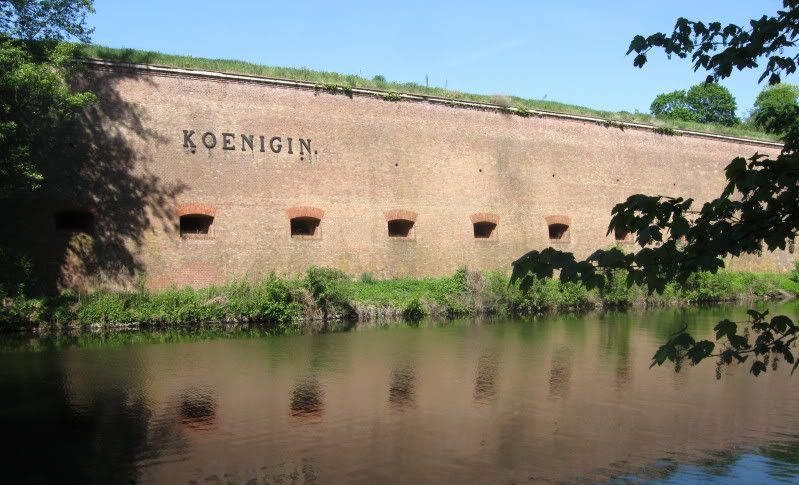
The western wall is equally imposing, although some trees have been allowed to grow at the edge of the moat.
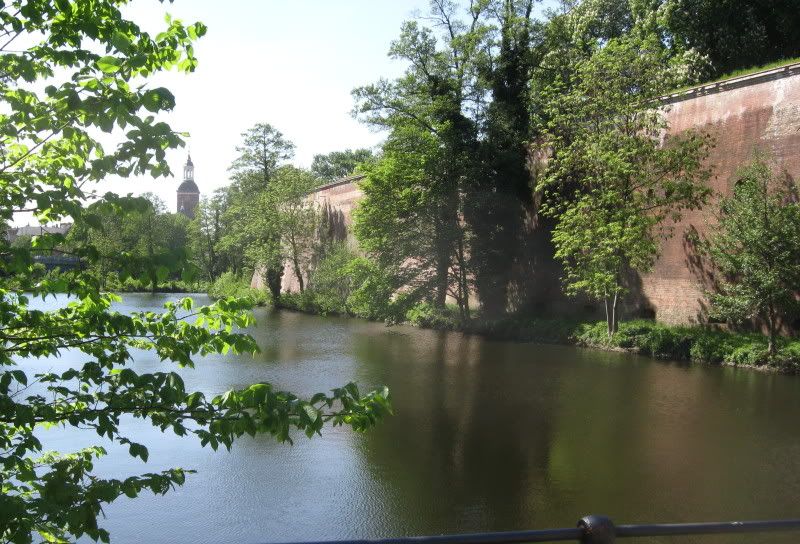
And here's the view along the north wall. There simply are no weak spots.
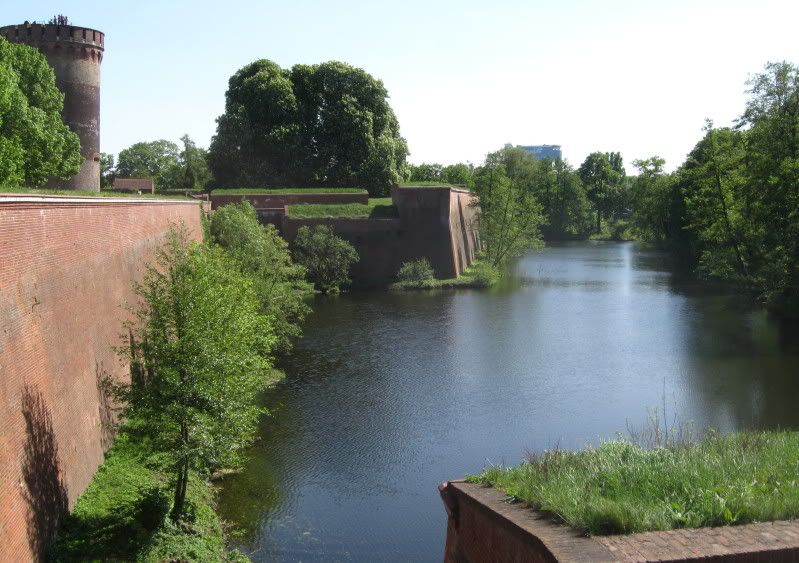
Now, before we go inside, let's look at the picture showing the overall plan. This is the current structure, but there were several versions before, and we'll see evidence of lots of remodeling on our tour.
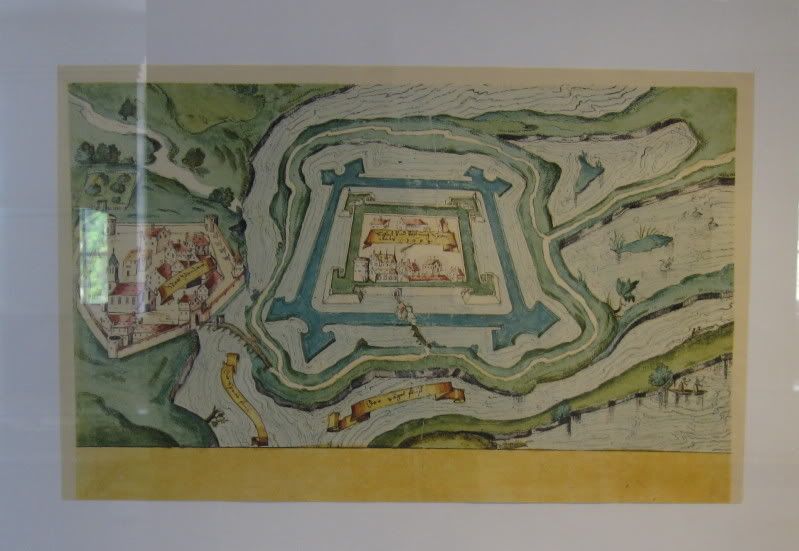
Now, a little more history. For many years the Zitadelle was used as a refuge, often for Jews who lived in the area. Inside more than 70 headstones have been discovered that clearly document the live and times inside the walls.
Now, let's walk inside and take a closer look.
One of the first things we'll notice is the remodeling/rebuilding that has taken place over the centuries. This wall is a great place to see that live.
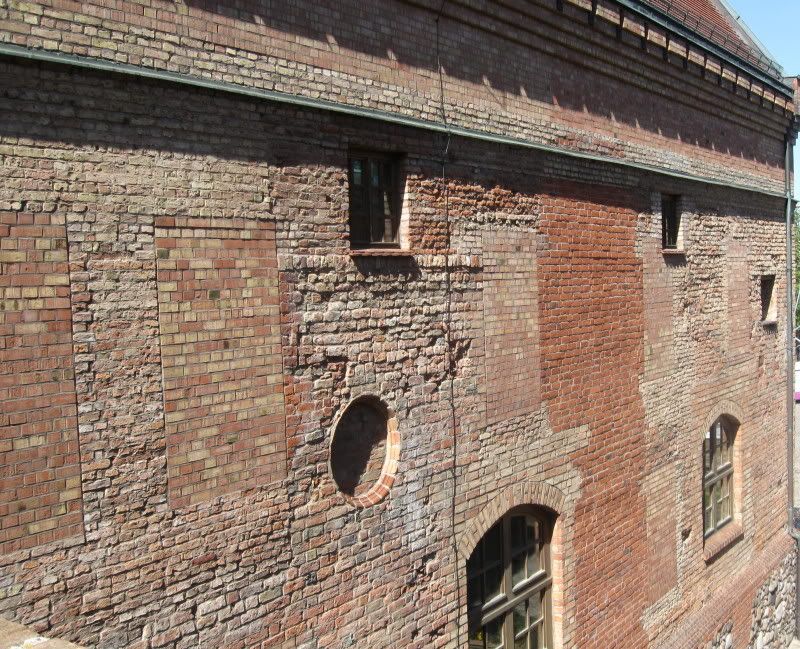
Another great example of that is the Julius Tower, or Juliusturm. It's pretty obvious from the outside that the tower was built in sections.

Now, let's head into the tower and take a look around. Here's the easiest route. We've climbed the stairs inside the main gate, and walked outside onto the top of the west battlement.
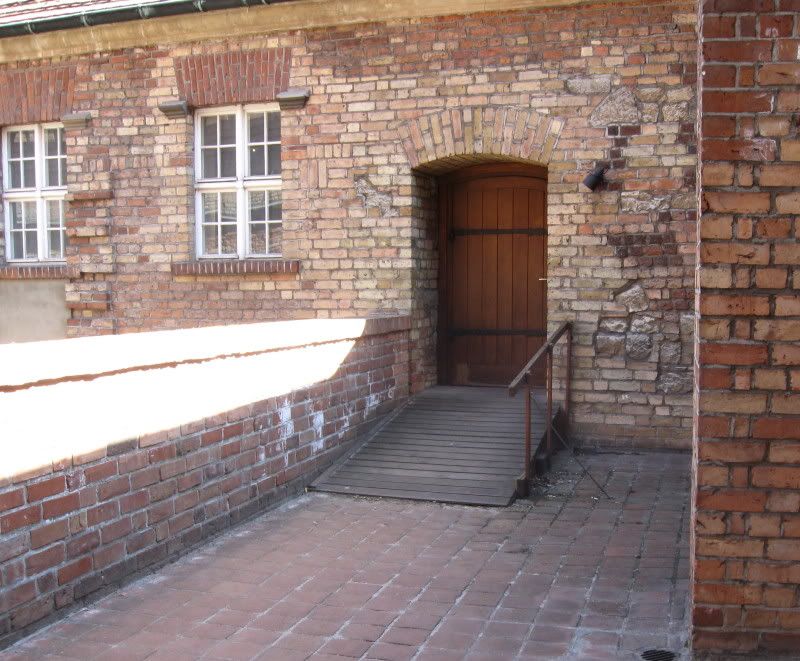
The stairs inside the tower are not original, but they're a pretty close reconstruction of the original. At first, there's just a narrow spiral that leads to the first floor. From that point on, the stairs were hung on the outside walls.
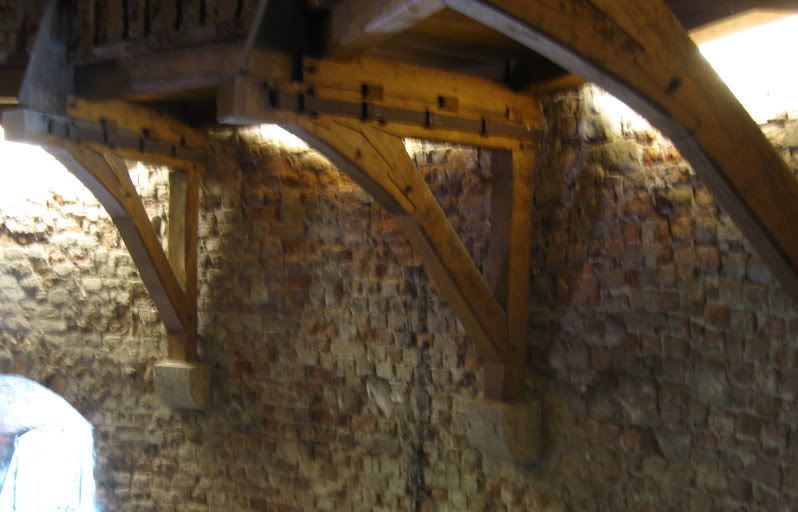
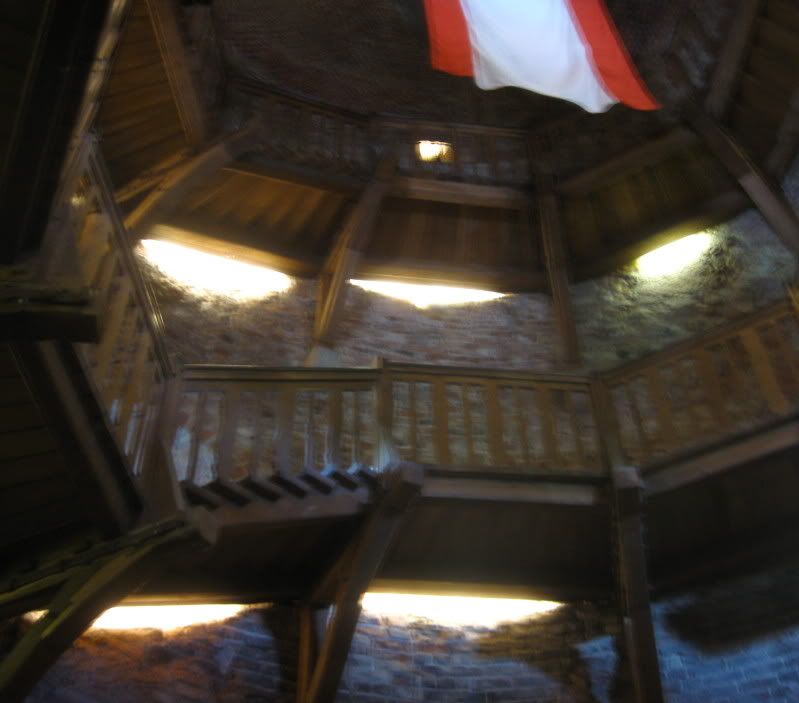
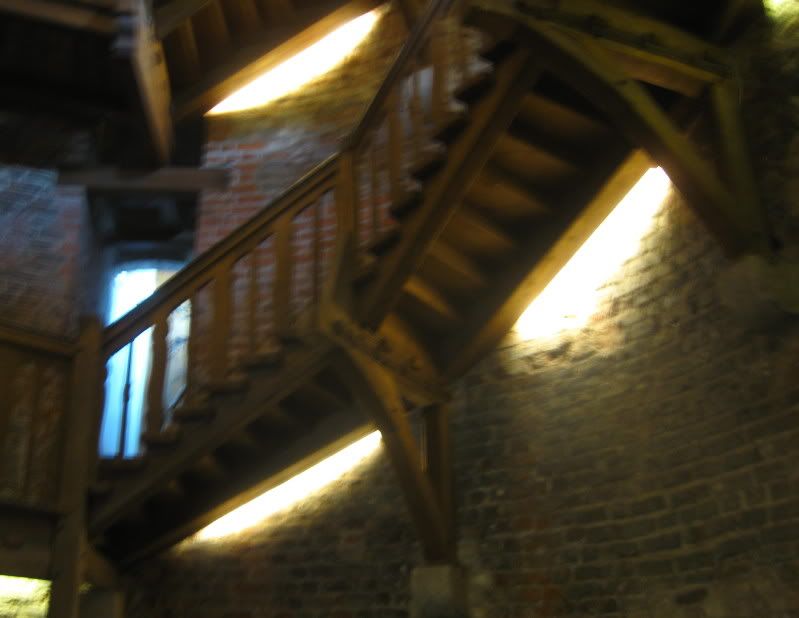
Since we know the tower was built in layers, there are features along the way. Here's an early lookout window.
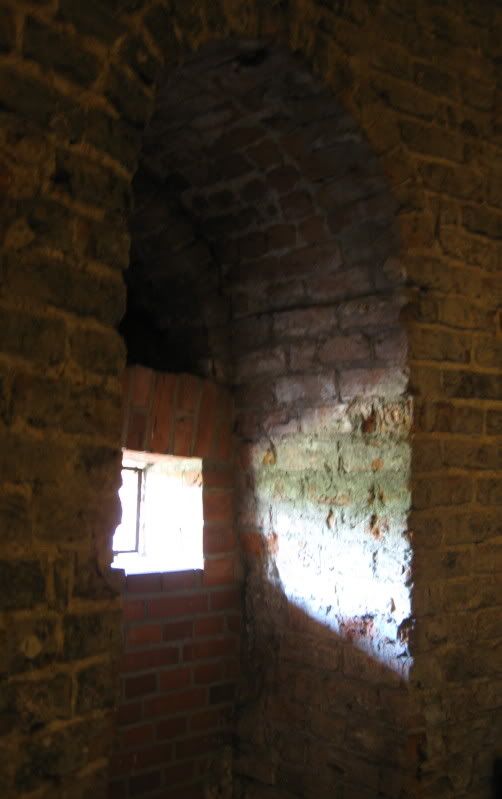
This is a place where some remodeling took place. You can see the thickness of the walls here.
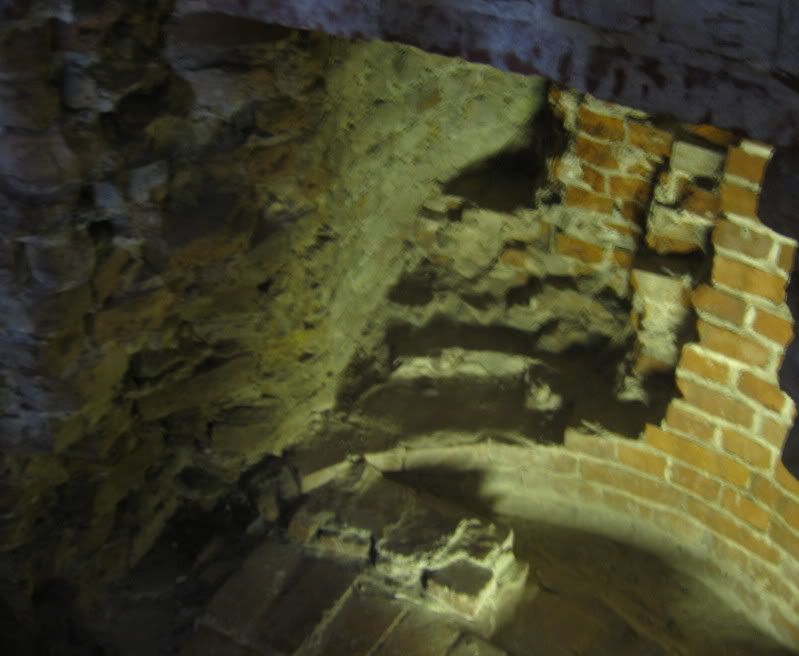
And here we can see a series of holes that originally supported the top floor when the tower was shorter.
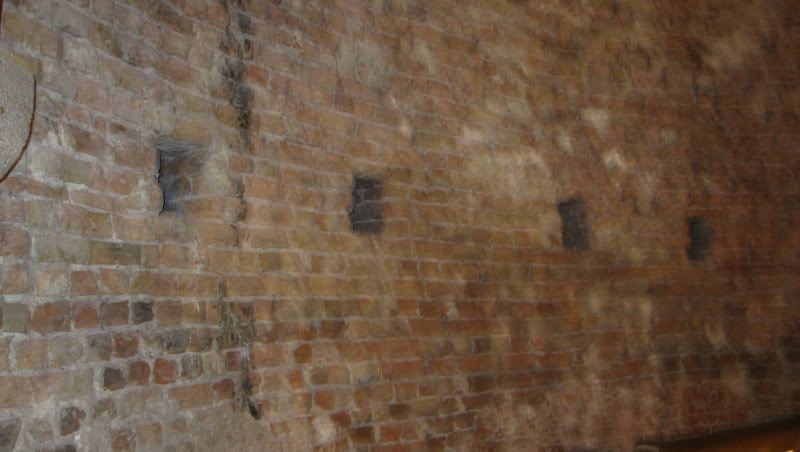
When we make it all the way to the top, the view is pretty impressive. Hey! You two! Stop horsing around. It's along way to the ground when you fall!
This is looking east, along the south battlement.
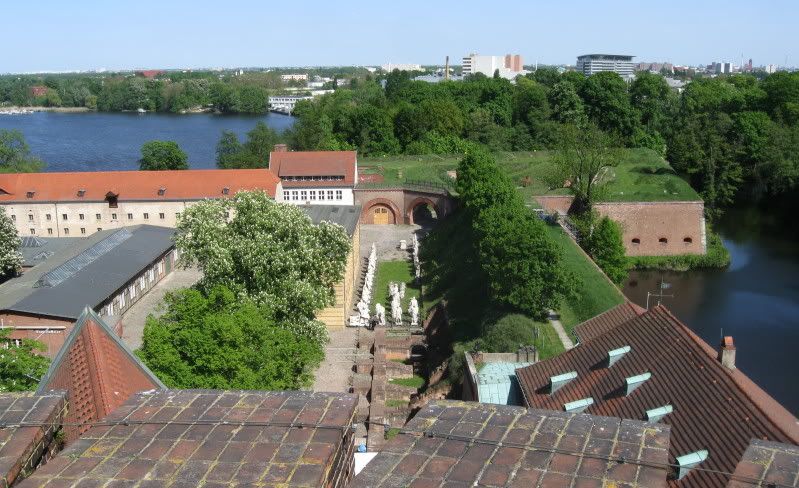
And this is the view along the northern battlement, again looking east.
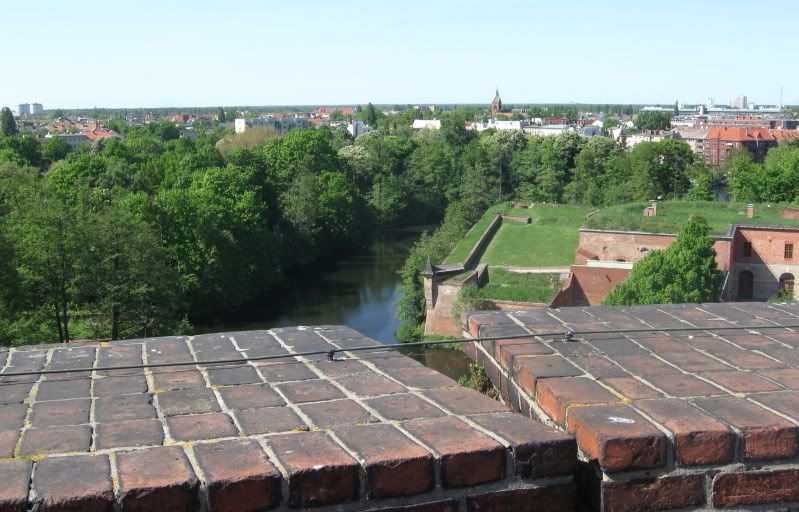
Okay, let's head back down. Stay to the right so other people can walk up. As we're walking I'll tell you a little bit more history. After the Franco-Prussian war in 1871, the war that actually united Germany for the first time, the gold that France paid as reparations was stored here in the Julius tower. In fact, the term Juliusturm is still used to describe any budget surpluses in Germany.
Now, before we head back outside, let's look around the exhibits inside the main gate building. There are lots of pictures, some old cannon, and other stuff like that, but I think you'll find the "hat room" most interesting. In a series of display cases, there are regimental hats from way back. Some were specifically designed to make the soldiers look taller.
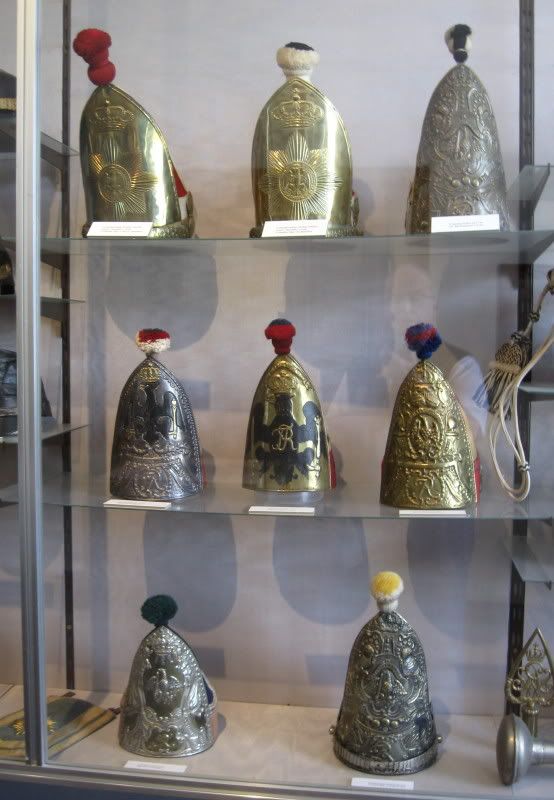
Some were simply reflective of the times.
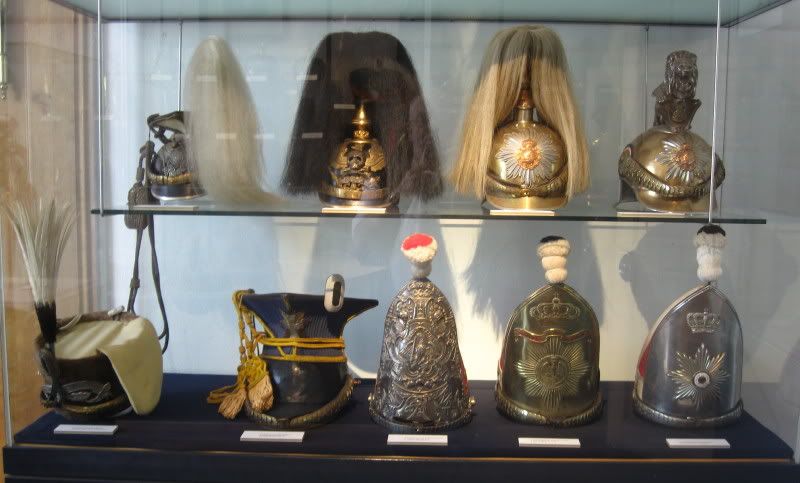
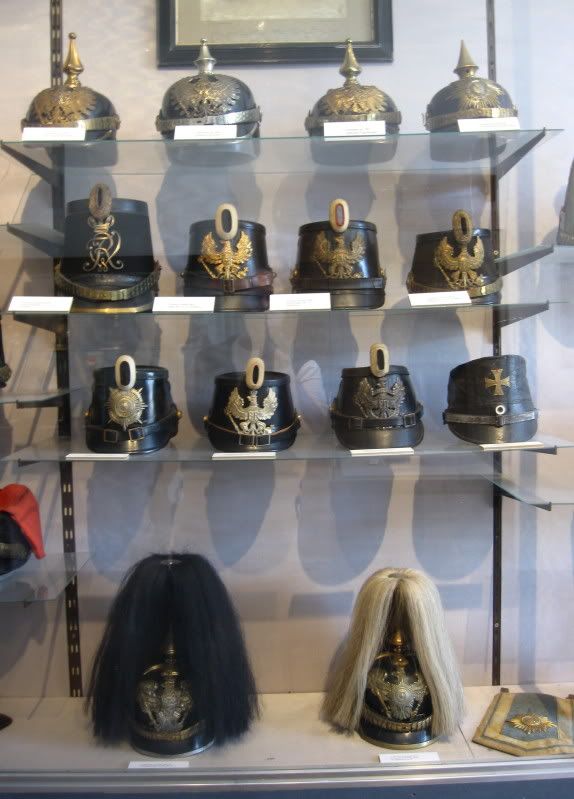
Now, we can take a moment to clarify something else you might have heard. During WWII, the SS divisions that supplied the guards for the concentration camps were termed totenkampf or "death's head" units. We tend to think of that as pretty extreme.
However, it's worth knowing that they weren't the first, and the symbolism in their hats wasn't anything new. Germany, or the German states, had long had units identified as "Death's Head" units. Here are a couple of earlier examples of that usage.
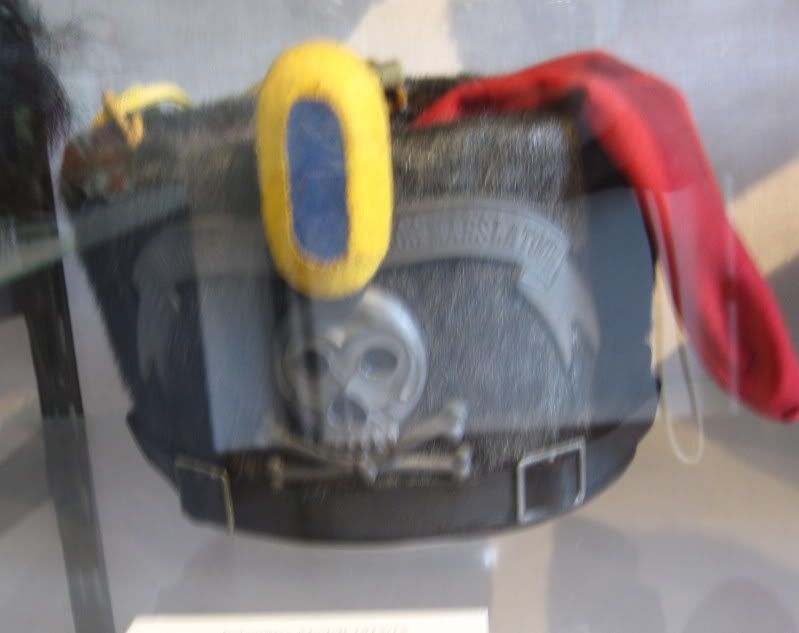
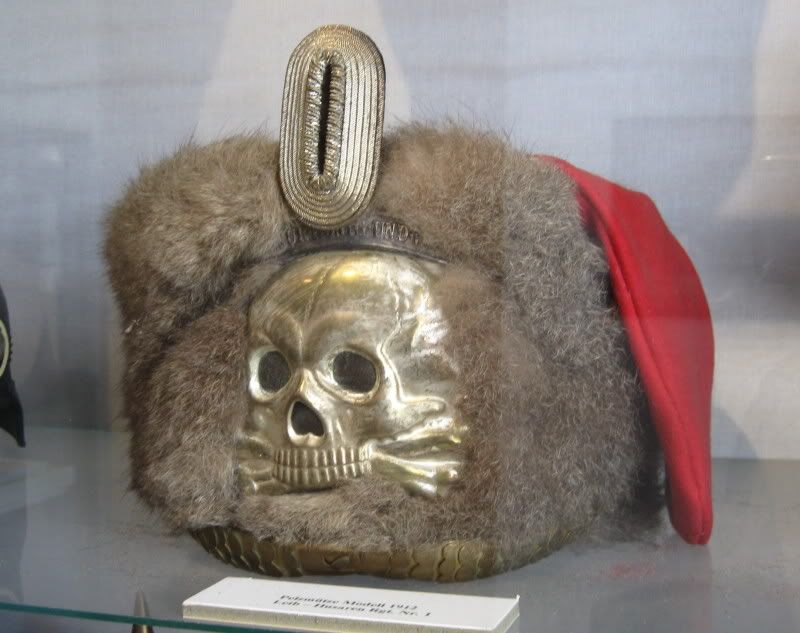
Okay, let's go outside and take a look around inside the Zitadelle. Here's the main parade ground. The bonfire in the middle is ready for April 30th, or WalpurgisNacht. There's a great carnival on that night, along with those Hexenrennen I mentioned. What are they? Oh, that's German for Witch Races. Yup. brooms and all. Great fun.
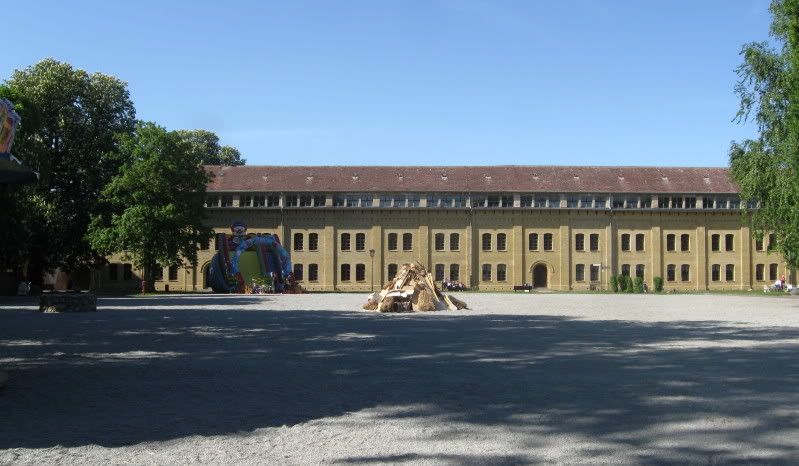
This is the site of the original powder magazine. It suffered a direct hit during one of the many sieges, and was never rebuilt.
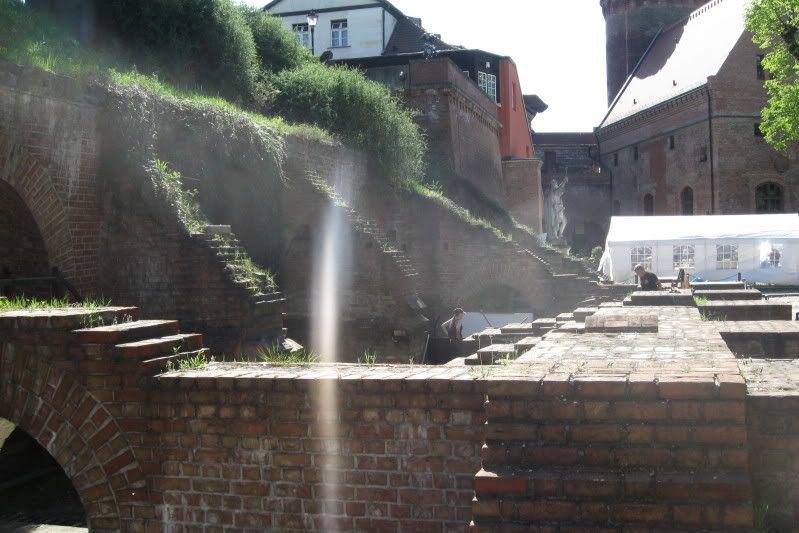
If we head up to the top, we can walk around the battlements and see the view from the defensive soldier's perspective. Looking to the east, we can see both the moat and the Havel river beyond.
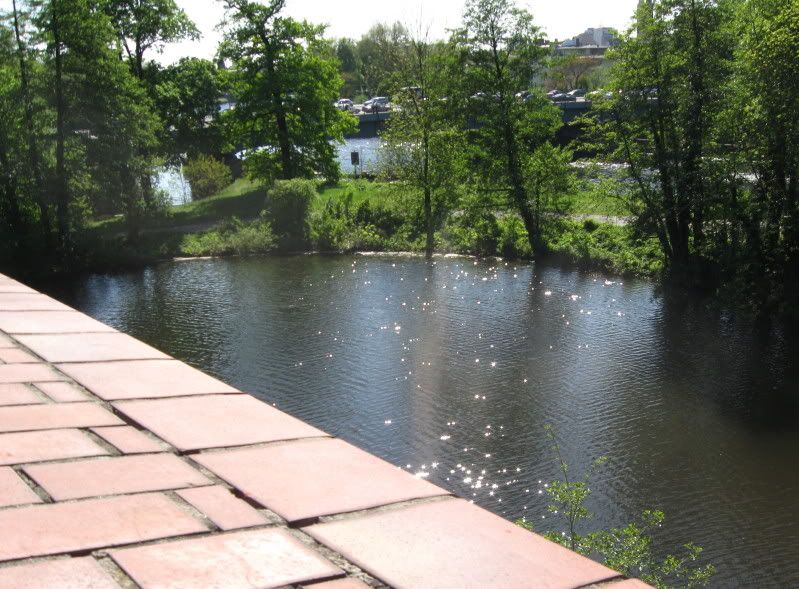
Here's the north side, with a nice thick defensive wall to protect us as we watch for invaders.
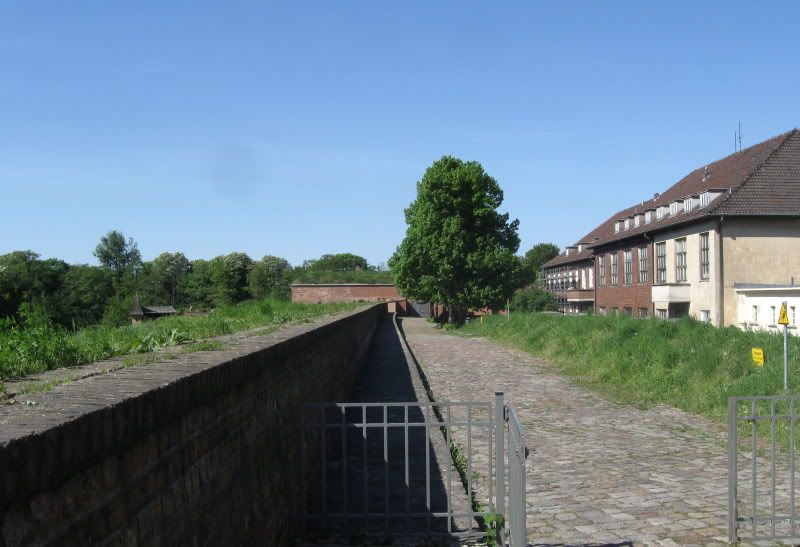
On the corners there were extra outposts, each properly protected.
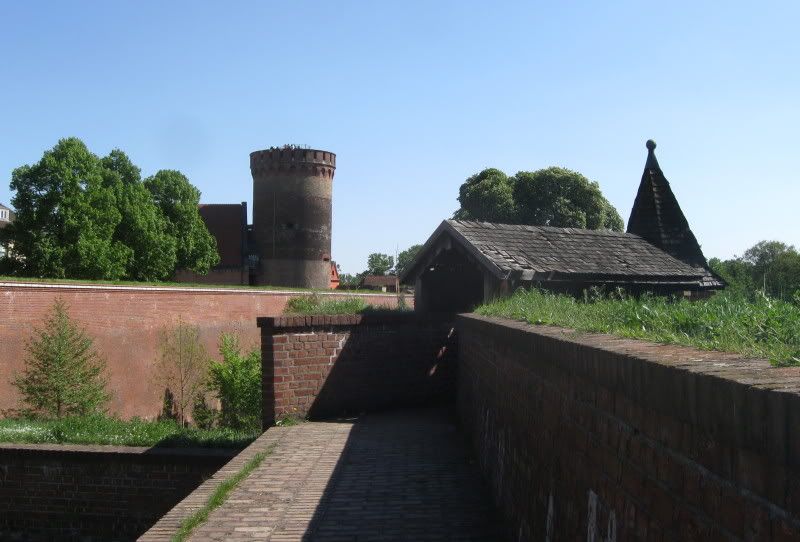
These outposts were protected well. Here's the view through a narrow arrow slit built into the wall.
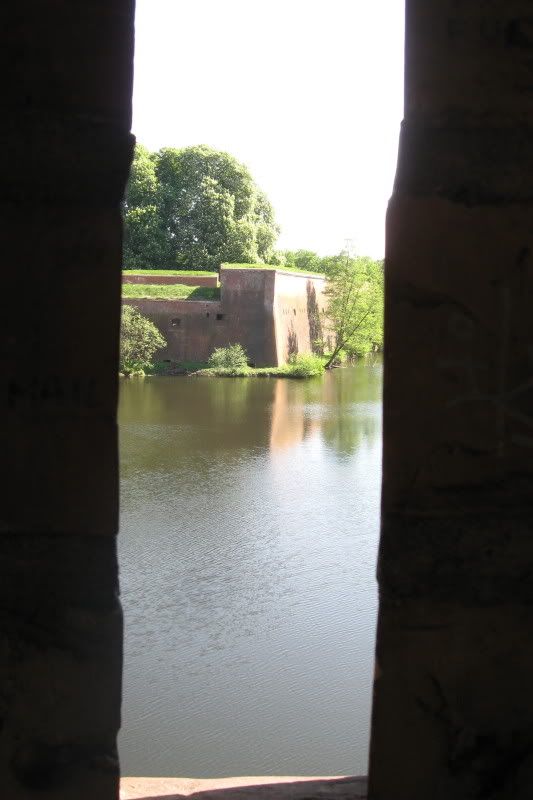
Back downstairs, we find evidence of the Italian influence that was the fashion in those days. This is a post-medieval fort, so thick walls were important to withstand cannon fire. Inside, however, there was still a place for lighter structures. This is the Italian courtyard, which can be rented for weddings and parties.
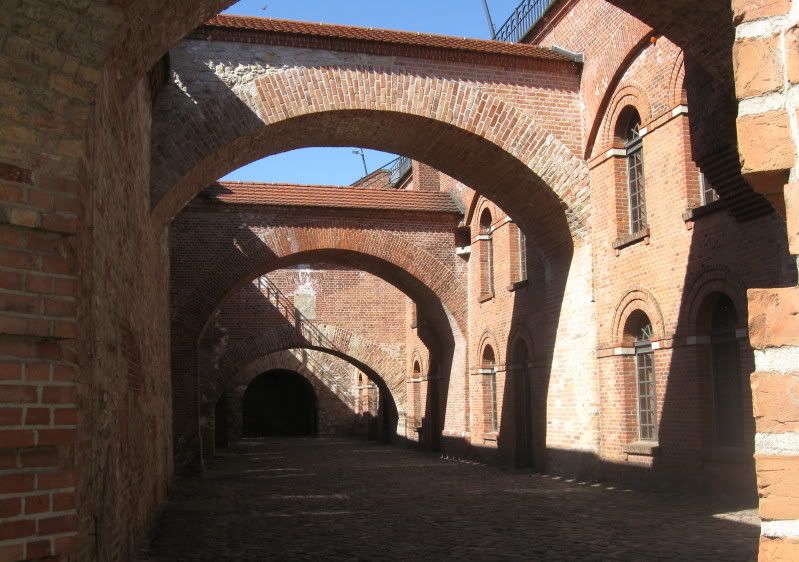
And here is a sample of exactly how thick those walls were.
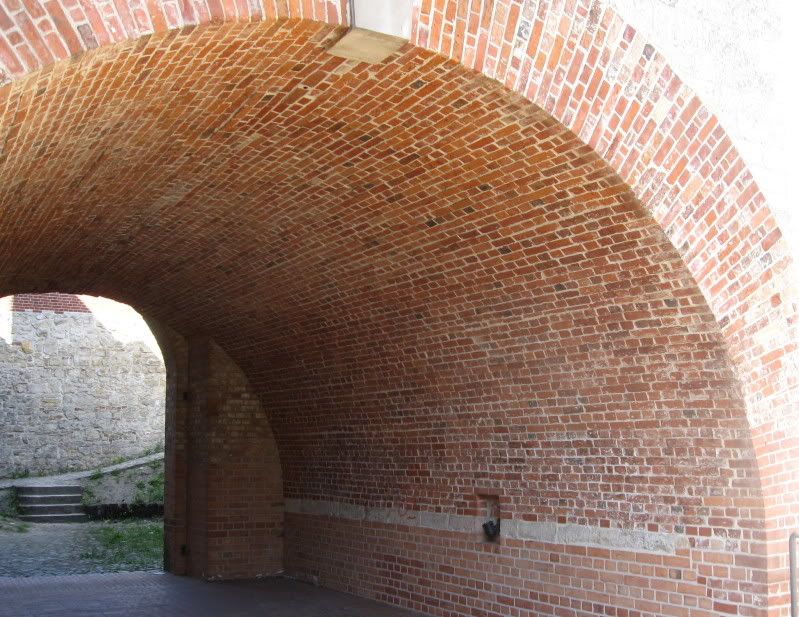
Now, one last stop. For many castles and forts, the weakest link was the water supply. Many sieges were lost when those inside no longer had water available. At the Zitadelle, there was a unique solution to the problem, although it did create a potential weak spot. Since the moat was fresh water, supplied by the Havel river, the interior water supply was simply an extension of that system.
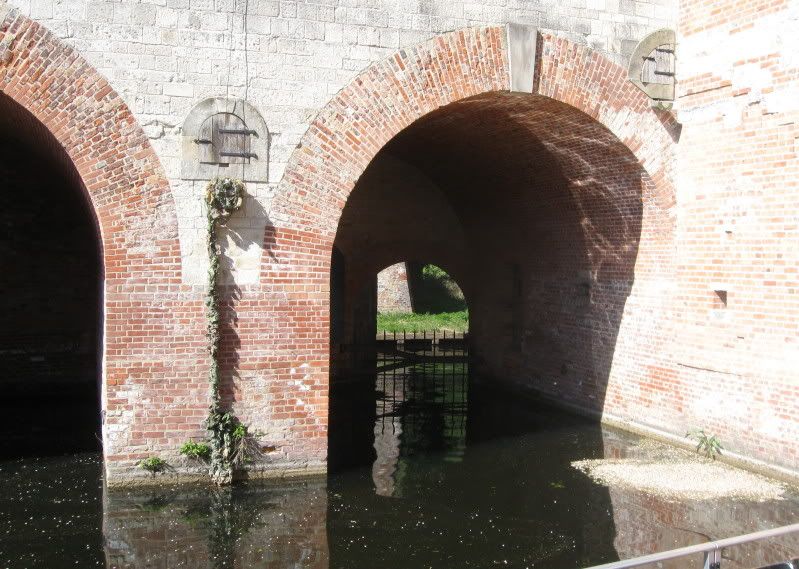
While this was an obvious weak spot, history says the fort was never successfully attacked through this route.
Well, that's our field trip for today, class. I hope you enjoyed the tour.
c
Okay, class, today I have a real treat for you. However, before we get off the train and strike out for our destination, I have a pop quiz. Two questions. Very simple.
Before you click on that link, you need to answer these.
1. Name the medieval castle that withstood a siege as late as 1945, and, in fact, didn't surrender until well after the end of the war in Europe.
2. Name a castle where you can go on Walpurgis Nacht and watch (or participate in) der Hexenrennen.
Okay, time's up. The answer to both questions is simple.
First, the answer to the quiz questions is the same: Spandau Zitadelle
The Zitadelle dates way back, and the original fortification on the site is believed to have been built in 1557, but it was built upon an existing fort. It is a classic structure of the time, completely surrounded by a moat (and river) and created with no blind spots. Between then and now it has undergone many changes and additions.
Now, let's walk a short distance from the S-Bahn and take a look, shall we?
Our first view provides some idea of how an ideal medieval fortification might look to an attacking enemy. While the picture looks pretty, the task of assault is pretty daunting.

As we move a little closer, we can look down the causeway towards the main gate. This is the only access to the structure, and there is a short drawbridge in front of the doorway.

Before we go in, let's look around the outside a little, just to see what an attacking army was up against. Here's the south side of the fort, looking eastward.

Here's the same wall, viewed more straight on. The gunports for cannon are more visible now.

The western wall is equally imposing, although some trees have been allowed to grow at the edge of the moat.

And here's the view along the north wall. There simply are no weak spots.

Now, before we go inside, let's look at the picture showing the overall plan. This is the current structure, but there were several versions before, and we'll see evidence of lots of remodeling on our tour.

Now, a little more history. For many years the Zitadelle was used as a refuge, often for Jews who lived in the area. Inside more than 70 headstones have been discovered that clearly document the live and times inside the walls.
Now, let's walk inside and take a closer look.
One of the first things we'll notice is the remodeling/rebuilding that has taken place over the centuries. This wall is a great place to see that live.

Another great example of that is the Julius Tower, or Juliusturm. It's pretty obvious from the outside that the tower was built in sections.

Now, let's head into the tower and take a look around. Here's the easiest route. We've climbed the stairs inside the main gate, and walked outside onto the top of the west battlement.

The stairs inside the tower are not original, but they're a pretty close reconstruction of the original. At first, there's just a narrow spiral that leads to the first floor. From that point on, the stairs were hung on the outside walls.



Since we know the tower was built in layers, there are features along the way. Here's an early lookout window.

This is a place where some remodeling took place. You can see the thickness of the walls here.

And here we can see a series of holes that originally supported the top floor when the tower was shorter.

When we make it all the way to the top, the view is pretty impressive. Hey! You two! Stop horsing around. It's along way to the ground when you fall!
This is looking east, along the south battlement.

And this is the view along the northern battlement, again looking east.

Okay, let's head back down. Stay to the right so other people can walk up. As we're walking I'll tell you a little bit more history. After the Franco-Prussian war in 1871, the war that actually united Germany for the first time, the gold that France paid as reparations was stored here in the Julius tower. In fact, the term Juliusturm is still used to describe any budget surpluses in Germany.
Now, before we head back outside, let's look around the exhibits inside the main gate building. There are lots of pictures, some old cannon, and other stuff like that, but I think you'll find the "hat room" most interesting. In a series of display cases, there are regimental hats from way back. Some were specifically designed to make the soldiers look taller.

Some were simply reflective of the times.


Now, we can take a moment to clarify something else you might have heard. During WWII, the SS divisions that supplied the guards for the concentration camps were termed totenkampf or "death's head" units. We tend to think of that as pretty extreme.
However, it's worth knowing that they weren't the first, and the symbolism in their hats wasn't anything new. Germany, or the German states, had long had units identified as "Death's Head" units. Here are a couple of earlier examples of that usage.


Okay, let's go outside and take a look around inside the Zitadelle. Here's the main parade ground. The bonfire in the middle is ready for April 30th, or WalpurgisNacht. There's a great carnival on that night, along with those Hexenrennen I mentioned. What are they? Oh, that's German for Witch Races. Yup. brooms and all. Great fun.

This is the site of the original powder magazine. It suffered a direct hit during one of the many sieges, and was never rebuilt.

If we head up to the top, we can walk around the battlements and see the view from the defensive soldier's perspective. Looking to the east, we can see both the moat and the Havel river beyond.

Here's the north side, with a nice thick defensive wall to protect us as we watch for invaders.

On the corners there were extra outposts, each properly protected.

These outposts were protected well. Here's the view through a narrow arrow slit built into the wall.

Back downstairs, we find evidence of the Italian influence that was the fashion in those days. This is a post-medieval fort, so thick walls were important to withstand cannon fire. Inside, however, there was still a place for lighter structures. This is the Italian courtyard, which can be rented for weddings and parties.

And here is a sample of exactly how thick those walls were.

Now, one last stop. For many castles and forts, the weakest link was the water supply. Many sieges were lost when those inside no longer had water available. At the Zitadelle, there was a unique solution to the problem, although it did create a potential weak spot. Since the moat was fresh water, supplied by the Havel river, the interior water supply was simply an extension of that system.

While this was an obvious weak spot, history says the fort was never successfully attacked through this route.
Well, that's our field trip for today, class. I hope you enjoyed the tour.
c